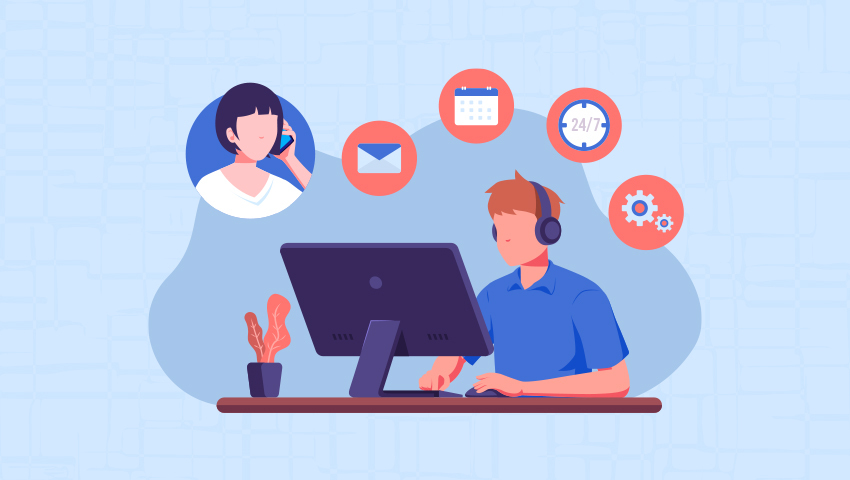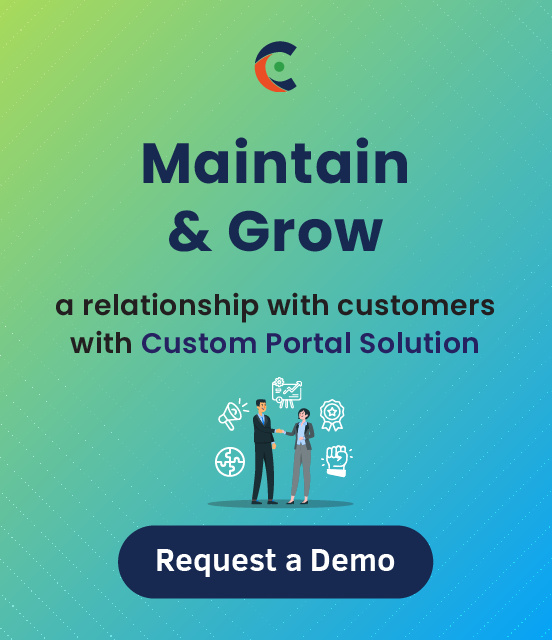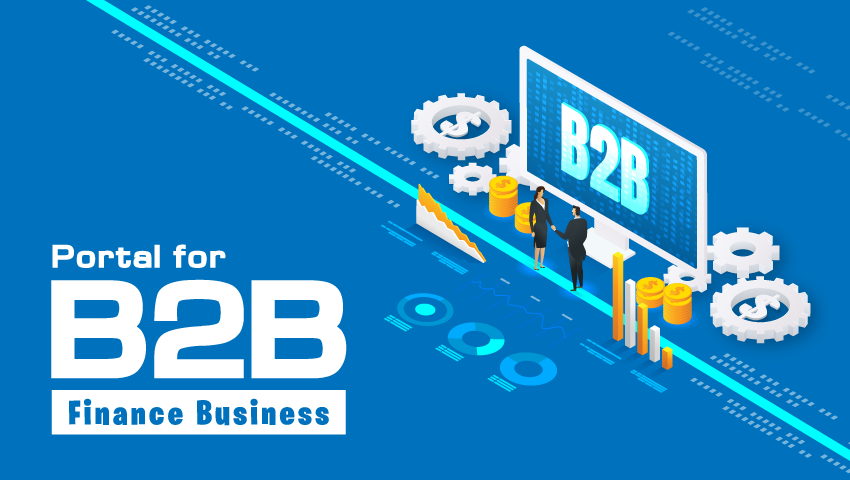Let me confess that digital channels are more convenient than calling customer support on any day. For example, tracking the order delivery online rather than calling the delivery service provider and asking them the status. Ordering food online, resolving laptop issues with help of documents and guides sounds like a better option.
Perhaps this convenience of finding answers instantly and getting support 24*7, have heightened our expectations. Eighty percent of customers now say that they’ll switch to a competitor after one bad experience. That’s too harsh, but you can’t blame customers. It’s technology, and if you’re stuck with a ‘90s theme, you can’t expect customers to stay by your side. You need to offer a service/ solution like Dynamics 365 portal to set a standard for a good customer experience and increase conversions.
But not many know how to support customers or offer the best of Dynamics CRM customer portal. Hence, in this article, we will learn how to make businesses ready for customer service success.
Why is Customer Service Important
It’s important for fostering long-lasting relationships. Customer service sets the business apart. It can make customers stay loyal to your brand, product, or services for a long time. However, this is possible only when you offer them something valuable and unique. For example, you can deliver services where customers are with an omnichannel feedback method. This way, customers can contact the support team in the way that’s convenient to them.
Here’s an example of it.
The experience you provide your customers can make or break your business, and hence customer service is important.
Difference between Customer Service and Customer Support
Often businesses confuse service and support to be similar. They think installing software is similar to helping customers in resolving a query. However, support means fixing the nuts and bolts of a table, i.e., the how factor, whereas customer service refers to both – why and how factor. It explains why you should/shouldn’t buy that particular table. If purchased, how to fix the bolts.
A customer support team can provide customers with the help they need. However, customer service builds trust and relationships. When you provide a better service, you give your customers a reason to choose you. Support with the why factor improves customer experience and helps businesses grow.
Here are a few examples of good and bad customer service:
Examples of Good and Bad Customer Service
We often hear brands going out of their way to offer incredible support. Trader Joe’s delivered an entire grocery list during the Atlanta storm. This once-in-a-while approach is good. However, great customer service is about meeting customers’ needs daily.
Here’s how to identify good customer service:
- It resolves the issues immediately. Each staff member has the autonomy to do their jobs to high standards. In digital space, it means self-service, live-chat, access to resources, etc.
- It offers 24*7 support. Being available when the customer needs increases the chances of conversions. Knowledge base, chatbots, and community are the ways to offer round-the-clock service.
- It serves customers on their preferred channels. For example, sending an invoice on WhatsApp or allowing interaction with agents via Facebook Messenger.
- It anticipates customers’ needs even before they ask for it. A proactive service includes a follow-up message asking for feedback, online surveys, and updating the knowledge base based on the trends in the customers’ questions.
- It offers personalized service. Like product and service recommendations based on their purchase history, recently viewed, etc.
Example of Bad Customer Service
Bad customer service lacks customer understanding and uses an inefficient approach due to which customer expectations are not met. The few factors that lead to the poor customer service are:
Long waiting times: Probably you’re using phone-dominant service solutions or have limited support staff. Inadequate knowledge about the service/product or not having the right tools or data access can also cause delay.
Complicated system: Perhaps you offer self-service but make it difficult to reach the agent in case of emergency. Having a knowledge base, automated systems, and AI-enabled chatbots are good, but having no method of redirecting to the agent can cause chaos.
Having to repeat information multiple times with no self-service option also affects businesses in a negative way. However, you can correct it with proper training and a digital solution like Dynamics CRM customer portal.
You can also adopt different types of customer services. The below section explains more about it.
Types of Customer Service
We already know about offering in-person service and digital service. Apart from this, businesses can adopt proactive, reactive, synchronous, and asynchronous types of customer service depending on their business requirements and service channels.
Proactive Support
It means anticipating customer requirements and solving their issues even before they feel the pain. A proactive service can be about adding a chatbot on the checkout page to reduce cart abandonment rates. It can also be a follow-up message or an email asking about the service and any issue with it. Sending customers messages about upcoming service disruptions is also an example of proactive service.
Reactive Support
It is also known as the break-fix approach. Here, you wait for a customer to reach you for an issue or support. For example, your system is down, and you call IT support for help. That’s reactive. Relying on tickets and inbound calls are reactive support services.
Synchronous Support
Synchronous service means helping in real-time. Live-chat, phone calls are examples of it. Asynchronous support has a beginning and end.
Asynchronous Support
A conversation that starts and stops at users’ convenience is an asynchronous type of service. Messaging via WhatsApp, Instagram can be considered as asynchronous as it allows users to stop and restart the conversation on their own accord without losing the context of previous conversation. Asynchronous is a preferable option as it allows users to troubleshoot the problem while doing other activities.
Proactive support helps you improve communication, while the other three ensures that you’re available when and where your customers need you. Hence, while integrating Dynamics 365 portal, I would suggest you offer all four types of customer service. It will have a huge impact on your business and customer experience.
Ways to Improve Customer Service
Online customer service is a way to support customers through digital tools like email, live chat, social media, messaging apps, a self-service portal, etc. Here are some tips to improve it.
Easy Interaction
Customers are willing to buy from companies that offer quick and easy transactions, in other words, a good customer experience.
Thus, offer a quick response with messaging and live chat support. You also need to train your support team so they can provide answers quickly. Make sure you have the right tools, as an outdated system can slow down the process and make it difficult for customers and support teams to interact with one another.
Choice of Channel and Service
In 2020, 64 percent of customers used a new customer service channel. The reality is that customers expect businesses to adopt new technologies and be as comfortable with new channels as they are. That means meeting customers where they are – email, social media, or messaging apps, and offering service the way they want – like in-person communication, self-service, etc.
69 percent of customers want to resolve issues on their own. Hence, provide a self-service help center. Keep it updated with product information and other relevant content. Create an omnichannel customer service strategy so that you can manage all channels in one place.
Soft Skills
The first thing customers notice while talking to a support agent is their tone. They want them to be empathetic as it shows that they understand them, i.e., customers.
The same customer service soft skills that we are talking about also apply in the digital realm. For example, customers read emails in a negative tone than originally intended. Hence, you should use exclamation points, emojis, or gifs while sending out emails to keep the communication tone light. However, this part requires a bit of training.
Be Real
Customers want businesses to be authentic. We know that there are days when the system is down, or service is low, and notifying customers about that is what impresses them.
Use a proactive approach. If the service is unavailable, notify them in advance that we won’t be available during these hours or this day. If you don’t have an answer at present, tell them you will get back to them as quickly as possible. Build a community where they can connect with other humans and share their experiences. Add a sense of humor to your AI chatbots. This excites customers and encourages them to interact frequently with your brand.
Community, live chat, and proactive support are the best ways to implement it.
At Your Service
As businesses become more customer-centric, empowering your customer service with a unified digital solution is important. Dynamics CRM customer portal offers flexibility, convenience, seamlessness, and productivity. It allows you and your customers to collaborate and manage from a single workspace efficiently.
All product and company names are trademarks™, registered® or copyright© trademarks of their respective holders. Use of them does not imply any affiliation with or endorsement by them.




